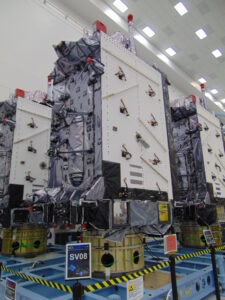
In the last three months, the U.S. Space Force’s Space Systems Command (SSC), previously known as Space and Missile Systems Center, has declared three Lockheed Martin [LMT] GPS III satellites "available for launch (AFL)," SSC said on Aug. 26. The three birds--GPS III SV06, SV07, and SV08--are awaiting callup at Lockheed Martin's GPS III plant in Waterton, Colo. The first satellite, SV06, is to launch next year and join the operational constellation of 31 GPS satellites. “SV06, SV07, and SV08…











